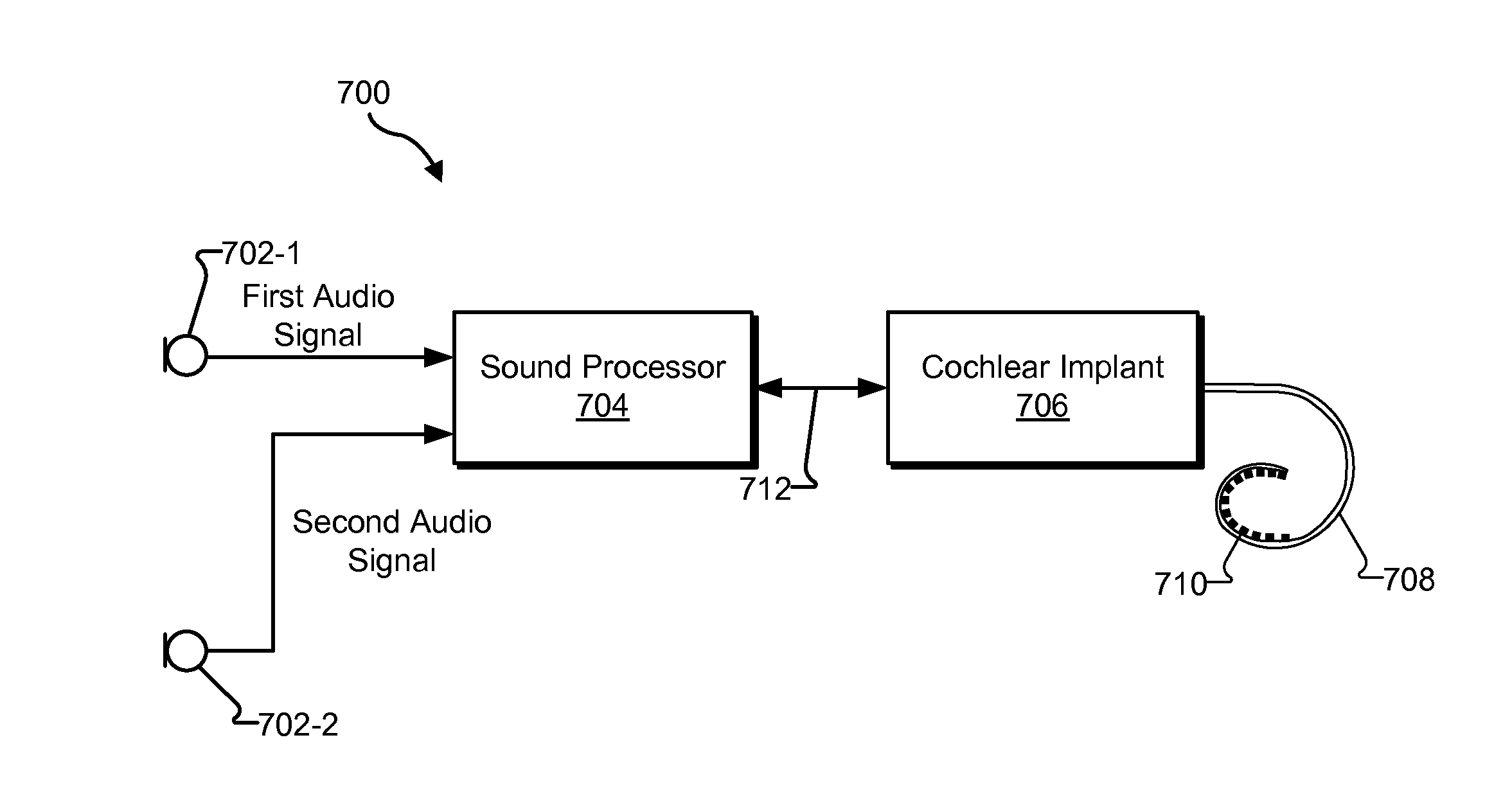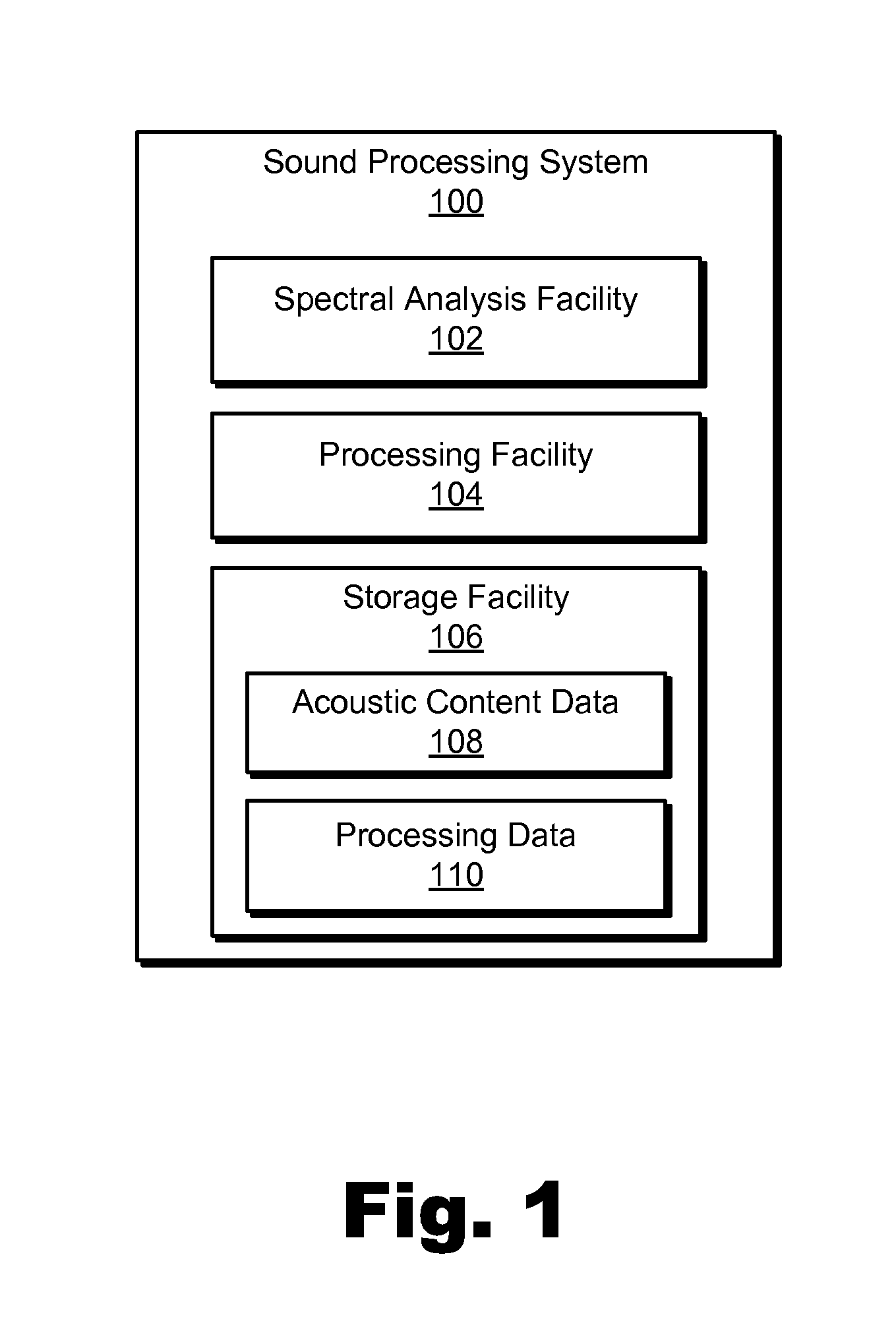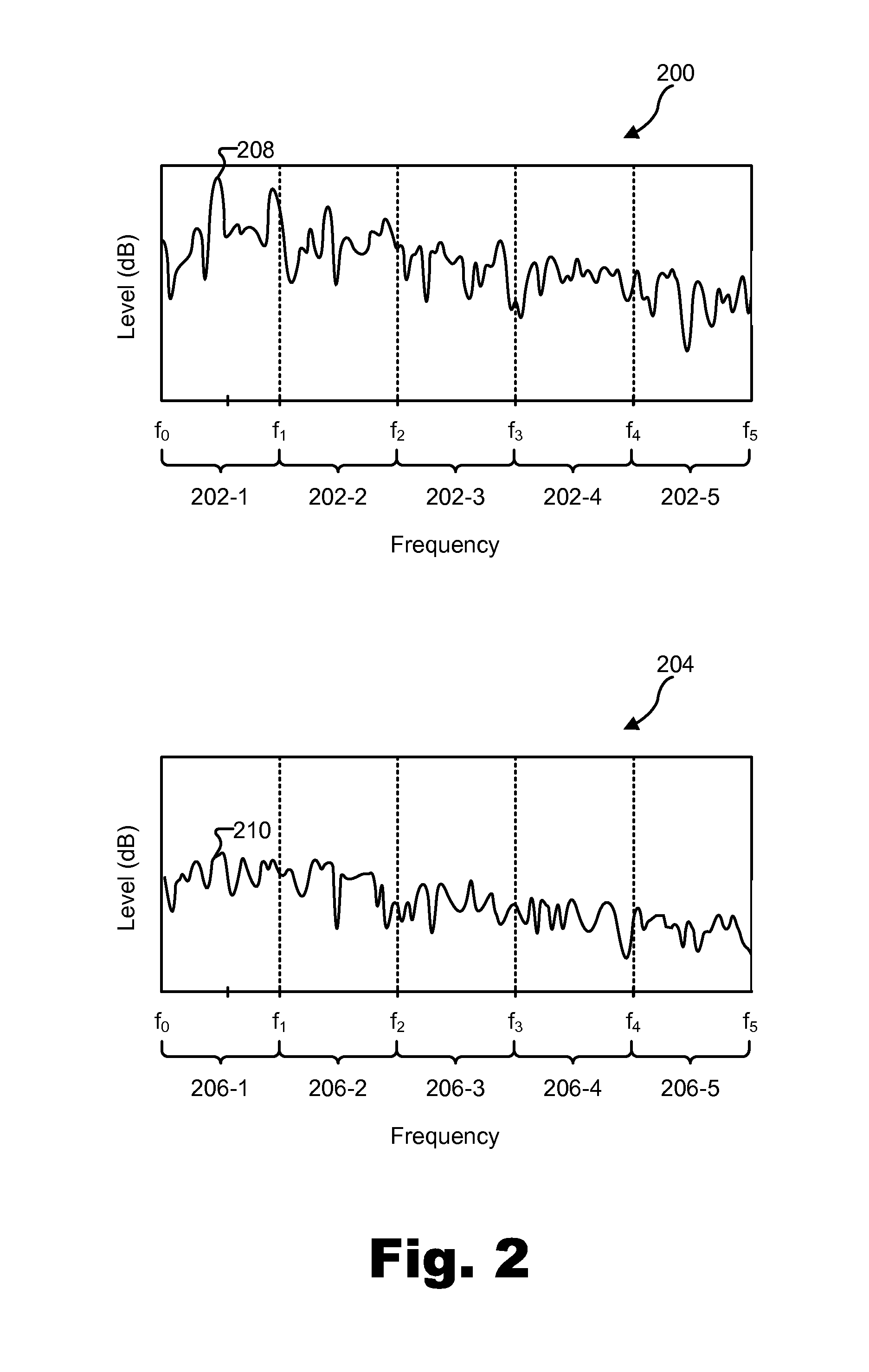Systems and methods for facilitating binaural hearing by a cochlear implant patient
a cochlear implant and patient technology, applied in the field of systems and methods for facilitating binaural hearing by a cochlear implant patient, can solve the problems of patient being incapable of binaural hearing, cochlear implant patients, and inability to hear binaural
- Summary
- Abstract
- Description
- Claims
- Application Information
AI Technical Summary
Benefits of technology
Problems solved by technology
Method used
Image
Examples
Embodiment Construction
[0013]Systems and methods for facilitating binaural hearing by a cochlear implant patient are described herein. As will be described below, a sound processing system may 1) divide a first audio signal detected by a first microphone associated with a first ear of a cochlear implant patient into a first set of analysis channels, 2) divide a second audio signal detected by a second microphone associated with a second ear of the patient into a second set of analysis channels corresponding to the first set of analysis channels, 3) process acoustic content contained in a first analysis channel included in the first set of analysis channels and acoustic content contained in a second analysis channel included in the second set of analysis channels, the first and second analysis channels both corresponding to a particular frequency band, 4) mix the processed acoustic content contained in the first and second analysis channels, and 5) direct a cochlear implant to apply electrical stimulation ...
PUM
 Login to View More
Login to View More Abstract
Description
Claims
Application Information
 Login to View More
Login to View More - R&D
- Intellectual Property
- Life Sciences
- Materials
- Tech Scout
- Unparalleled Data Quality
- Higher Quality Content
- 60% Fewer Hallucinations
Browse by: Latest US Patents, China's latest patents, Technical Efficacy Thesaurus, Application Domain, Technology Topic, Popular Technical Reports.
© 2025 PatSnap. All rights reserved.Legal|Privacy policy|Modern Slavery Act Transparency Statement|Sitemap|About US| Contact US: help@patsnap.com



